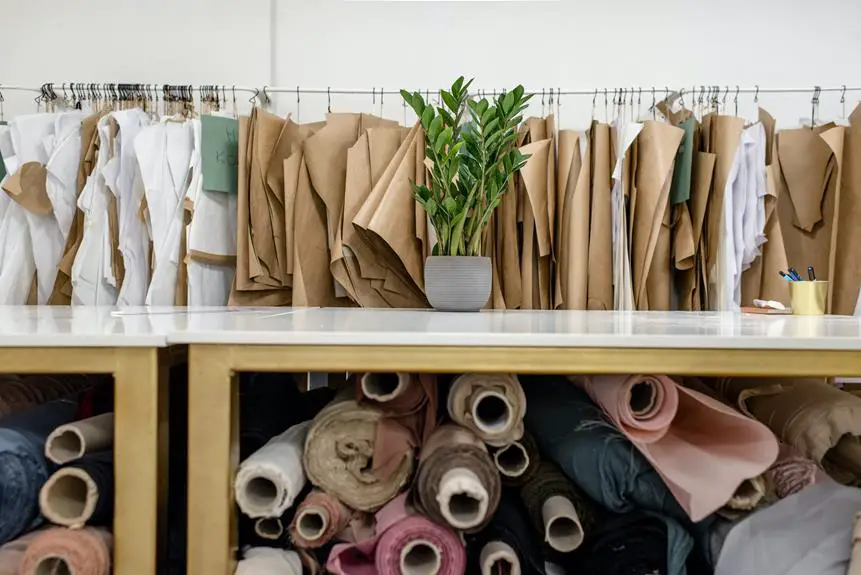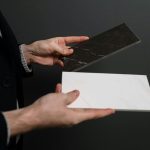Looking to protect your home from the most extreme hurricanes? Look no further.
When it comes to hurricane screens, the battle between polypropylene and Kevlar is fierce. Both fabrics offer impressive durability and strength, but which one truly reigns supreme?
In this comparison, we'll delve into the nitty-gritty details, from durability and strength to performance and cost. By the end, you'll be equipped with the knowledge to make an informed decision and ensure your home is safeguarded against the harshest of storms.
So, let's weigh the options and find out which fabric stands tall as the ultimate hurricane screen material.
Key Takeaways
- Kevlar offers higher tear resistance and tensile strength compared to polypropylene.
- Kevlar screens outperform polypropylene in impact resistance and are commonly used in ballistic and stab-resistant body armor.
- Kevlar has better longevity and can withstand harsh conditions, making it preferred for areas prone to hurricanes.
- While Kevlar screens are more expensive upfront, their durability reduces the need for frequent replacements, making them more cost-effective in the long run.
Durability Comparison
When comparing the durability of polypropylene and Kevlar hurricane screens, you want to consider factors such as tear resistance, tensile strength, and long-term performance.
Both polypropylene and Kevlar are known for their weather resistance, making them suitable for protecting against hurricanes and other severe weather conditions. However, when it comes to longevity comparison, Kevlar stands out for its exceptional strength and durability. Kevlar hurricane screens have a higher tear resistance and tensile strength compared to polypropylene, which makes them more resilient in the face of extreme weather.
Polypropylene, on the other hand, also offers good durability and weather resistance, but it may not match the long-term performance of Kevlar. While both materials can provide reliable protection, Kevlar's longevity and ability to withstand prolonged exposure to harsh conditions make it the preferred choice for areas prone to frequent hurricanes or severe storms.
Strength Assessment
To assess the strength of polypropylene and Kevlar hurricane screens, consider their tensile and impact resistance, crucial factors for enduring severe weather conditions. In terms of material composition, polypropylene is a synthetic thermoplastic polymer, while Kevlar is a synthetic fiber known for its high tensile strength.
Polypropylene screens are lightweight and flexible, making them easier to install, but Kevlar screens are significantly stronger and can withstand greater impact force.
When it comes to impact resistance, Kevlar outperforms polypropylene due to its exceptional strength-to-weight ratio. Kevlar is known for its use in ballistic and stab-resistant body armor, showcasing its ability to withstand high-velocity impacts. In contrast, while polypropylene screens offer decent impact resistance, they may not hold up as well under extreme weather conditions.
Considering these factors, Kevlar hurricane screens demonstrate superior strength and durability compared to polypropylene. While polypropylene screens may be suitable for milder weather conditions, Kevlar screens are better equipped to handle the intense forces of hurricanes and severe storms.
When choosing a hurricane screen, it's essential to prioritize strength and impact resistance to ensure maximum protection for your property.
Performance Evaluation
You need to test the performance of both polypropylene and Kevlar hurricane screens to determine their effectiveness in real-world conditions. When evaluating their performance, consider factors such as weather resistance and material lifespan.
Testing the weather resistance involves subjecting the screens to various weather conditions, including heavy rain, strong winds, and intense sunlight. This will help you assess how well each fabric holds up against the elements, ensuring that it can effectively protect against hurricanes and other severe weather events.
In addition to weather resistance, evaluating the material lifespan is crucial to understanding the long-term durability of the hurricane screens. By conducting tests to simulate extended exposure to environmental stressors, you can gauge how each fabric deteriorates over time. This is essential for assessing the longevity of the screens and determining which material offers the most durable and sustainable solution for hurricane protection.
Performance evaluation plays a critical role in determining the overall effectiveness of polypropylene and Kevlar hurricane screens. By thoroughly testing their capabilities in real-world conditions, you can make an informed decision about which fabric reigns supreme in providing reliable and long-lasting protection against hurricanes.
Cost Analysis
The cost analysis of polypropylene and Kevlar hurricane screens reveals important insights into the economic considerations of choosing between the two fabrics. When comparing the initial cost, Kevlar hurricane screens tend to be more expensive upfront due to the higher cost of the raw material. However, when it comes to long-term investment, Kevlar proves to be more cost-effective due to its exceptional durability, which reduces the need for frequent replacements.
Additionally, Kevlar's high tensile strength and resistance to wear and tear make it a reliable choice for withstanding the harsh forces of hurricanes and storms, potentially saving you money on repairs and replacements in the long run. On the other hand, while polypropylene hurricane screens may have a lower initial cost, their durability and ability to withstand the test of time may not be as robust as Kevlar, leading to potential higher long-term expenses in maintaining and replacing the screens.
Installation Considerations
An efficient installation process for hurricane screens is crucial for ensuring their effectiveness in protecting your property. When considering the installation of hurricane screens, it's essential to prioritize weather resistance and maintenance requirements. The installation should be carried out meticulously to ensure that the screens are securely fitted to withstand the forces of a hurricane or strong winds.
It's important to choose a professional installer with experience in handling hurricane screens. They'll ensure that the screens are properly aligned and securely fastened to provide maximum protection. Additionally, the installation process should consider the specific requirements of your property, taking into account factors such as the type of structure and potential impact zones.
Furthermore, the installation should be conducted with future maintenance in mind. Proper installation can contribute to reducing the maintenance requirements of hurricane screens, making them more cost-effective in the long run. By ensuring that the screens are installed correctly, you can minimize the need for frequent adjustments or repairs, ultimately increasing the longevity and effectiveness of the hurricane protection system.
Frequently Asked Questions
Can Polypropylene or Kevlar Hurricane Screens Be Easily Repaired if They Are Damaged?
If your polypropylene or Kevlar hurricane screen gets damaged, both fabrics have repair options available. While Kevlar offers superior durability, both materials can be easily repaired, ensuring long-lasting protection for your home.
Are There Any Environmental Considerations or Sustainability Factors to Take Into Account When Choosing Between Polypropylene and Kevlar Hurricane Screens?
When choosing between polypropylene and Kevlar hurricane screens, it's important to consider environmental impact and sustainability factors. Polypropylene is recyclable and Kevlar has a longer lifespan, so both have eco-friendly aspects to consider.
How Do Polypropylene and Kevlar Screens Compare in Terms of Resistance to UV Rays and Fading Over Time?
When comparing polypropylene and Kevlar hurricane screens, it's important to consider their resistance to weathering and long-term durability. Polypropylene generally offers good UV resistance, while Kevlar is known for its exceptional strength and durability over time.
Are There Any Specific Maintenance Requirements for Polypropylene Versus Kevlar Hurricane Screens?
When it comes to maintenance requirements, polypropylene hurricane screens generally need less upkeep compared to Kevlar. Polypropylene's durability makes it a low-maintenance option, while Kevlar might require more attention to ensure longevity.
Can Polypropylene or Kevlar Hurricane Screens Be Customized to Fit Unique Window or Door Shapes and Sizes?
When it comes to hurricane screens, both polypropylene and Kevlar options can be customized to fit unique window or door shapes and sizes. This allows for a tailored installation process, ensuring a perfect fit for your specific needs.
- The Manufacturing Process of Nonwoven Polypropylene - July 11, 2025
- Is Suede Considered a Nonwoven Material? - July 11, 2025
- Is Silk a Nonwoven Fabric? - July 11, 2025







